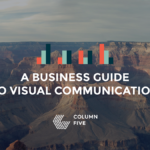A brand identity isn’t an aesthetic choice; it’s a business strategy. A good brand identity sets the tone for every moment customers engage with your company. From the visuals to the words you use, it signals who you are before you even speak. The right brand identity clicks instantly, builds trust, and stands out. While competitors fade into the noise, strong branding helps you leave a mark.
This is why brands with a clear identity see 23% higher revenue growth.
But what makes a good brand identity? And how do you create one that makes a mark in your industry? Today, we’re breaking down great brand identity design and examples to help you build a memorable brand of your own.
Core Elements of Brand Identity
Every strong brand identity brings strategy and visuals together. The logo opens the door—it’s the anchor that captures your essence. It should be easy to recall and reflect what you stand for.
Color cultivates emotion, whether serious or playful. Typography tells its own story. For example, tech brands lean into simple, modern fonts. Premium labels might favor refined serif typefaces. They may seem small, but those details build a language your audience immediately understands.
Of course, brand voice is your North Star. It defines your values, your perspective, and your personality. Your word choices—how you sound and what you say—become your signature across every channel.
If you want to build a cohesive brand, you need to include the following:
- Purpose: Why does the brand exist?
- Values: What principles guide decisions and actions?
- Visual Identity: How does the brand look in the world?
- Voice and Messaging: How does the brand sound and communicate?
- Customer Experience: How do people feel when they interact with the brand?
When these pillars work together, a brand stands out and builds real trust. Think about brands you admire—chances are, they nail these elements every time.
13 Stand-Out Brand Identity Design Examples
Ever wondered how industry leaders build unforgettable brands? They each use identity to capture attention and create loyalty.
1) Coca-Cola
Coca-Cola has a knack for making people feel something real. That red-and-white logo? It’s more than just a design; it’s a symbol recognized in nearly every corner of the world. That’s because the brand doesn’t just sell a drink; it sells a feeling. Think about the “Share A Coke” campaign. Swapping out the logo for people’s names turned a simple bottle into a personal invitation. Suddenly, grabbing a Coke became a way to connect with friends, family, or even a stranger at a party.
Every detail, from the classic glass bottle to the upbeat jingles, works together to spark joy. If you think about it, the ads don’t show people drinking soda. They show friends laughing at a picnic, families gathered around a table, and strangers sharing a moment at a concert. The message is clear: Coca-Cola is about bringing people together. The result? People don’t just remember the taste. They remember the feeling.
2) Starbucks
Starbucks offers more than just a place to grab coffee. The brand’s “third place” promise transforms each store into a welcoming escape between home and work. Walk in, and the atmosphere feels intentional, thanks to soft lighting, comfortable chairs, and music that never overwhelms. The staff greets customers with genuine warmth, often remembering names or favorite drinks. That small recognition can turn a routine stop into something memorable.
The entire brand experience, from the interiors to the green siren logo, encourages people to linger, whether they’re catching up with a friend, reading a book, or just taking a break from a busy day. It’s a beacon for anyone looking for a moment of calm.
3) Tesla
Tesla draws people in with a reputation for pushing boundaries. The brand’s sharp, modern logo isn’t just a design choice; it signals a commitment to forward-thinking technology. That clean, minimalist look carries through every product, from the sleek Model S to the futuristic Cybertruck. Each detail feels intentional, reflecting a bigger mission: making sustainable tech not just accessible, but desirable.
Tesla’s approach to selling cars is disruptive, too. Instead, customers buy directly, often online or in stylish showrooms that feel more like tech stores than car lots. This direct sales model empowers buyers and enables the team to manage the customer experience. It’s a bold move, especially in an industry where tradition runs deep. But in a market crowded with lookalike vehicles and cautious brands, Tesla stands out.
4) Patagonia
Patagonia is known for its strong values and sense of purpose. The brand’s mountain silhouette logo is a direct nod to the wild places Patagonia works to protect. Earthy colors and rugged visuals run through their ads, stores, and even their website, all reinforcing a deep connection to nature and a commitment to activism.
Take their “Don’t Buy This Jacket” campaign. Instead of pushing for more sales, Patagonia challenged customers to think twice before making a purchase. The message? Protecting the planet matters more than selling another product. That bold move sparked conversations everywhere, from outdoor blogs to dinner tables.
Why does this matter? People want brands to stand for something real. Patagonia proves that a company can lead with its values and still build a loyal following. Their story inspires others to think bigger about what business can achieve.
5) Airbnb
Airbnb’s “Bélo” logo tells a layered story. At first glance, it’s a simple mark, but look closer and it’s a clever blend of a heart, a location pin, and the letter A. This is a perfect example of storytelling in design. The heart signals warmth and care, the pin grounds the brand in travel, and the A ties it all back to Airbnb.
Their photography leans into cozy, lived-in spaces too—think sunlit kitchens, handwritten notes on the table, and real people enjoying their stay. The messaging feels like a friend’s invitation, not a corporate pitch. “Belong anywhere” isn’t just a tagline; it’s a promise.
The brand identity works hard to break down barriers, making strangers feel like neighbors, so it’s no wonder guests and hosts from all over the world feel connected through Airbnb. The whole experience, from the app to the welcome email, feels like it’s designed to bring people together.
6) Spotify
Spotify’s brand pulses with the energy of music discovery. The bold green color is a signal that something fresh is waiting. Their graphics move and shift, echoing the rhythm of a favorite song. The playlists aren’t just generic mixes; they’re tailored to moods, moments, and even the weather outside. Open the app, and it’s clear: this is a place built for exploring.
The brand voice is also direct, playful, and always in tune with the listener’s vibe. Spotify’s visuals and messaging work together to create a space where everyone—from audiophiles to casual listeners—feels at home. The result? Users stick around, not just for the music, but for the feeling of being understood.
7) Mailchimp
Mailchimp brings a burst of personality to the world of email marketing. In a space that’s often dry and technical, their brand stands out with whimsy and color. The mascot, Freddie, pops up with a wink or a high five, making even the most complex tasks feel approachable. The copy is friendly and clear, turning jargon into plain language. The brand’s illustrations use bold colors and quirky characters, transforming dashboards and reports into something users actually want to explore.
When Mailchimp expanded from email to a full marketing platform, they didn’t lose that spark. The playful style guided users through new features, making the transition feel less like a leap and more like a guided tour. That’s why they remain the pinnacle of B2B marketing.
Mailchimp proves that even serious business tools can be fun, approachable, and memorable. The result? Users feel empowered, not intimidated, every step of the way.
8) Slack
Slack didn’t just build a tool for chatting at work—it made the whole experience feel more human. The logo, with its overlapping shapes, is a visual nod to how people and ideas come together. The colors? They’re lively and inviting, a clear break from the usual gray and blue of business software.
Teams notice the difference right away. The language in Slack feels like a friendly nudge, not a corporate memo, so it’s easy to see why so many teams feel at home there. The brand’s warmth and personality make even the busiest workday feel a little lighter.
9) Warby Parker
Warby Parker took the eyewear world and gave it a fresh spin. The brand’s look is clean and classic, but never boring. Typography is crisp, packaging feels special, and the home try-on box turns shopping for glasses into a fun treat. Thus, people often talk about the experience, not just the product.
Warby Parker’s social mission—donating a pair of glasses for every pair sold—adds another layer of meaning. Customers feel like they’re part of something bigger, and the brand’s approachability and purpose make it stand out in a crowded market.
10) Dollar Shave Club
Dollar Shave Club didn’t just sell razors; it made people laugh. With simple packaging, the messaging is bold and direct. But their brand voice is bold and edgy. The brand’s first video ad went viral because it was honest and funny, poking fun at the old way of buying razors, which immediately endeared them to a younger generation of consumers.
Ultimately, Dollar Shave Club proved that even the most basic products can have a brand identity worth fanboying over.
11) Glossier
Glossier built a brand around real people and real stories. The soft pink packaging is instantly recognizable, but it’s the “skin first” philosophy that connects.
Shopping with Glossier feels like joining a community, not just buying a product. The brand features user photos and testimonials everywhere, making customers feel seen. And this simplicity and authenticity have made it a favorite for a new generation. The real win is that Glossier’s approach makes beauty feel accessible and personal, both online and in stores.
12) Zoom
Zoom’s look is all about clarity and ease. The blue-and-white palette feels calm and trustworthy, which matters when people rely on it for essential calls. The interface is clean, with nothing extra to distract from the conversation. When remote work became the norm, Zoom’s consistent design helped people adapt quickly. The brand became a symbol of staying connected, even when everything else was changing.
Zoom’s reliability and friendly, approachable design made it the go-to choice for teams, families, and classrooms—and it has remained a market winner ever since. (Find out more about what you can learn from Zoom’s success.)
13) Notion
Notion gives people the tools to work their own way. The logo is modular, hinting at the flexibility inside. The design is minimal, but not cold. Every element feels intentional, making it easy to build a workspace that fits any style. Notion’s visual system also adapts to individuals and teams alike.
This clarity and adaptability make it a favorite for anyone who wants to organize their work without feeling boxed in. Notion proves that structure and creativity can go hand in hand.
How to Apply Brand Identity Principles to Your Business
Start by defining your core values. These guide everything from visuals to voice. Think about:
- What makes your business unique?
- Which qualities do you want to convey (e.g., innovation, credibility, playfulness) ?
- How can every touchpoint reflect these values?
Next, focus on your people. Tailor your look and voice to what your audience needs and feels. Craft a brand strategy to outline who your audience is, what matters to them, what inspires them, and how your brand fits their lives. Align your identity to these insights.
Keep it consistent, too. Your website, packaging, emails, and socials should all send the same message. Detailed guidelines—covering logos, colors, fonts, and tone—can make this easy for your team.
Put your concepts to the test, too. Show real users your designs and messages. Quick feedback helps refine ideas so your identity feels spot-on from the start.
You also need to build buy-in from your team early. Everyone should know what your brand stands for and how to live it daily. Staff training, workshops, and easy access to guidelines help keep everyone pulled in the same direction.
Common Pitfalls to Avoid
Focusing on visuals and skipping strategy leads to good-looking branding that misses the mark. Every logo and color needs a purpose tied to clear business outcomes or audience needs.
Don’t copy the competition. Researching them makes sense, but returning with a clone never sticks. Differentiation forms the backbone of strong brands.
However, whatever branding you choose, you have to stay consistent. Mixing logos, changing colors, or shifting tone can confuse—and customers notice fast. So stick to your guidelines.
Also, be aware of how you talk about your brand and how your brand acts. For example, when internal culture doesn’t match external messaging, the disconnect shows. Make sure everyone at your company not only knows the story but feels a part of it. Otherwise, authenticity slips away.
Helpful Tools and Templates
Everyone benefits from having a single source of truth, so design a brand style guide to keep your entire look and feel on track. Guidelines should cover:
- Clear logo usage rules
- Color palettes
- Typography standards
- Photo and illustration styles
You should also make use of additional tools to help you design and maintain your brand identity.
Design tools: Adobe Creative Cloud handles pro projects, while Canva makes visual assets accessible for smaller teams.
Asset management: Platforms like Frontify simplify sharing and updating brand elements.
AI content systems: Column Five’s AI-Powered Content Systems generate copy and visuals that stay true to your brand—without extra manual work.
Pro tip: Use our brand identity toolkit to build a complete brand from scratch.
Elevate Your Brand Identity
Use these examples as inspiration to evolve your own identity, but remember the brands that lead don’t just echo trends. They dig deep, own their story, and deliver unique value to every audience they serve. To do this effectively, you need to have a solid brand foundation and build every element of your identity as an extension of that foundation.
It’s challenging work, but it is the only way to stand out. And, luckily, you don’t have to do it alone. If you need help aligning (or realigning) your brand identity, find out how our experts can help you turn your story into a brand identity that genuinely connects.





